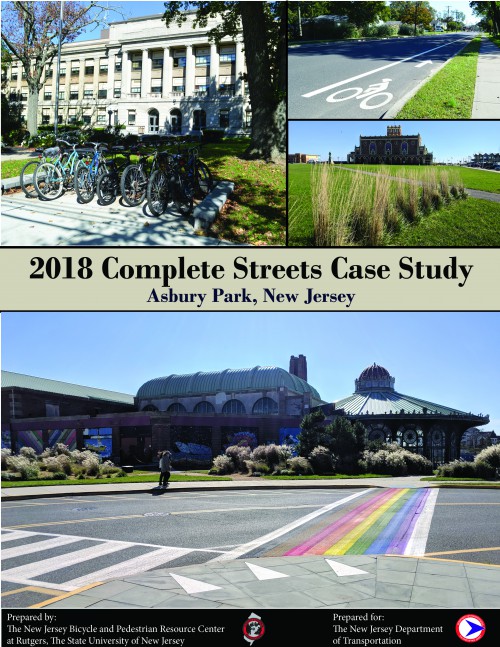In 2009, the New Jersey Department of Transportation adopted a Complete Streets policy which defined a complete street as one designed to provide safe access for all users by implementing a comprehensive integrated multi-modal network of transportation options. The benefits include increased safety for all users, connections between origins and destinations, and the promotion of healthier and more livable communities. Since the policy’s adoption, Complete Streets has built momentum throughout the state. As of December 2018, 8 counties and 148 municipalities have followed the lead and adopted their own Complete Streets policy.
Established and laid out before the automobile, Asbury Park was built for active transportation. Even with the growth of the automobile, bicycling along the shore has always been an attractive activity. Many people who never touch a bicycle in their day-to-day lives are more than happy to rent a baby blue beach cruiser and spend time meandering past Victorian homes on the way to a seafood dinner on the boardwalk. To accommodate the demand for safe bicycling by both residents and tourists, the municipality has taken a series of steps to make Asbury Park a community of Complete Streets.
The Bicycle and Pedestrian Resource Center, part of the Alan M. Voorhees Transportation Center at Rutgers University, has developed a series of case studies intended to highlight Complete Streets leaders in New Jersey. The purpose of this report, funded by NJDOT, is to highlight Asbury Park’s Complete Streets policy and accomplishments. The report is based on findings provided in interviews with municipal staff and local advocates. Speaking with both groups gave greater insight into how Asbury Park has become a local leader in building safer streets.
The report begins with a summary of key findings followed by background information on historical, demographic, and land use data collected from county and Census documents. This information is essential to understanding the context of Complete Streets in Asbury Park. The report then explores the history of the Asbury Park Complete Streets policy, including how the policy was developed, promoted, and implemented. Successes and challenges are then highlighted for the benefit of other communities looking to implement Complete Streets and a number of next steps provide readers with insight into the policy’s future. This report will serve as a valuable tool for engineers, planners, elected officials, and advocates who want to move forward with Complete Streets in their communities.
Read full report: Complete Streets Case Study: Asbury Park, New Jersey (2018)

